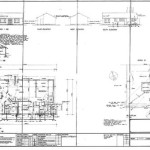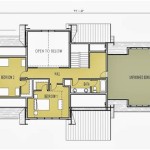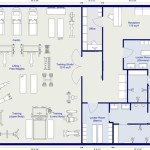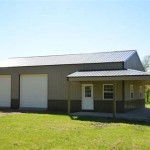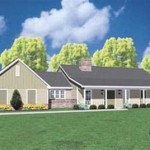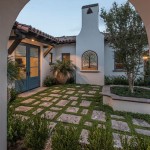Small Cottage Plans With Loft: Maximizing Space and Charm
The allure of a small cottage lies in its inherent charm, affordability, and efficient use of space. When combined with a loft, these attributes are amplified, offering a versatile living solution that caters to diverse needs. Small cottage plans with lofts are particularly appealing for individuals, couples, or small families seeking a compact and cost-effective home without sacrificing essential living areas. These designs expertly weave together practicality and aesthetics, resulting in dwellings that are both functional and visually appealing.
A loft within a small cottage plan serves multiple purposes. It can function as a bedroom, a home office, a reading nook, or simply extra storage space. The adaptability of the loft contributes significantly to the overall liveability of the cottage, making it a popular choice for those seeking a minimalist lifestyle or a vacation getaway. The design considerations that go into creating a successful small cottage plan with a loft are complex, balancing spatial efficiency with structural integrity and aesthetic appeal.
The architectural considerations for a small cottage plan with a loft begin with the foundation. Depending on the soil conditions and local building codes, a slab-on-grade, crawl space, or basement foundation might be chosen. The choice of foundation influences not only the structural stability of the cottage but also the overall cost and ease of construction. For example, a slab-on-grade foundation is typically the most economical and straightforward to build, while a basement foundation provides additional living or storage space, albeit at a higher cost.
The framing of the cottage is another crucial aspect of the design. Timber framing, stick framing, and prefabricated panel systems are common construction methods. Timber framing, while aesthetically pleasing and historically significant, often requires specialized labor and can be more expensive. Stick framing, using dimensional lumber, is a more conventional and widely available method. Prefabricated panel systems offer the advantage of faster construction times but require precise planning and coordination.
Roof design plays a significant role in the visual appeal and functionality of a small cottage with a loft. Gable roofs, shed roofs, and gambrel roofs are common choices. A gable roof, with its simple triangular shape, is relatively easy to construct and provides ample headroom in the loft area. A shed roof, with its single sloping plane, offers a contemporary aesthetic and can be oriented to maximize solar gain. A gambrel roof, with its dual slopes, provides even more headroom in the loft and can resemble a barn-like structure.
The interior layout of a small cottage with a loft is carefully considered to maximize every square foot. Typically, the ground floor encompasses the main living areas, such as the kitchen, living room, and bathroom. The loft, accessible via a staircase or ladder, then serves as a secondary living space or bedroom. Open-concept layouts are common, allowing for a seamless flow between the living areas and creating a sense of spaciousness despite the limited square footage.
Key Considerations in Loft Design
Designing a loft within a small cottage requires careful attention to several key factors. Headroom is paramount, as insufficient headroom can make the loft feel cramped and uncomfortable. Building codes typically specify minimum headroom requirements for habitable spaces, and these must be adhered to. The placement of windows and skylights is also crucial, as natural light can significantly enhance the perceived size and livability of the loft. Ventilation is another important consideration, as lofts can become excessively warm, especially during the summer months. Adequate ventilation can be achieved through operable windows, skylights, and mechanical ventilation systems.
The staircase or ladder leading to the loft must be safe and accessible. Staircases, while more space-consuming, offer greater stability and ease of use. Ladders, on the other hand, are more compact but can be challenging for some individuals to navigate, particularly those with mobility issues. The choice between a staircase and a ladder depends on the available space, the intended use of the loft, and the physical capabilities of the occupants. The design of the staircase or ladder should also complement the overall aesthetic of the cottage.
Safety considerations are paramount when designing a loft. Guardrails or railings must be installed along the edges of the loft to prevent falls. The structural integrity of the loft floor must be sufficient to support the intended load, including furniture, occupants, and stored items. Smoke detectors and carbon monoxide detectors should be installed in the loft and on the ground floor to provide early warning in the event of a fire or carbon monoxide leak. Building codes typically specify minimum requirements for these safety features.
Choosing the Right Loft Style for Your Cottage
The style of the loft should complement the overall design aesthetic of the cottage. A rustic cottage, for example, might feature a loft with exposed beams, wood paneling, and natural materials. A modern cottage, on the other hand, might have a loft with clean lines, minimalist finishes, and contemporary lighting. The choice of materials, colors, and finishes should reflect the desired style and create a cohesive look throughout the cottage.
A sleeping loft, designed primarily for sleeping, can be relatively simple in its design. A mattress on the floor, a small nightstand, and a reading lamp might be all that is needed. A living loft, intended for relaxation and entertainment, might require more space for seating, a television, and other amenities. A home office loft should be equipped with a desk, chair, adequate lighting, and access to electrical outlets and internet connectivity.
The level of privacy that the loft provides is another important consideration. An open loft, with no walls separating it from the ground floor, can create a sense of spaciousness and connectivity. However, it also offers little privacy. A closed loft, with walls and a door separating it from the ground floor, provides more privacy but can feel more enclosed. The choice between an open and closed loft depends on the desired level of privacy and the intended use of the loft.
Cost-Effective Strategies for Building a Loft Cottage
Building a small cottage with a loft can be a cost-effective alternative to building a larger, more conventional home. However, careful planning and budgeting are essential to ensure that the project stays within budget. Choosing affordable materials, simplifying the design, and performing some of the labor oneself can all help to reduce costs.
Opting for a prefabricated cottage kit can also be a cost-effective way to build a small cottage with a loft. These kits typically include all of the necessary materials and instructions for assembling the cottage. While prefabricated kits can save time and money, it is important to carefully research the available options and choose a reputable supplier. The quality of the materials and the ease of assembly can vary significantly between different kits.
Prioritizing energy efficiency can also save money in the long run. Insulating the cottage walls and roof, installing energy-efficient windows and doors, and using energy-efficient appliances can all help to reduce energy consumption and lower utility bills. Solar panels can also be installed to generate electricity and further reduce energy costs. Government incentives and tax credits may be available to offset the cost of energy-efficient upgrades.
The size of the cottage is a major factor in determining the overall cost. Reducing the square footage of the cottage, even by a small amount, can significantly reduce the cost of materials and labor. Careful planning and efficient space utilization can help to minimize the size of the cottage without sacrificing essential living areas. Multi-functional furniture, such as sofa beds and folding tables, can also help to maximize space and reduce clutter.
In conclusion, small cottage plans with lofts offer a compelling solution for those seeking a compact, affordable, and charming dwelling. By carefully considering the design, construction, and cost-effectiveness of the project, it is possible to create a small cottage with a loft that perfectly meets one's individual needs and aesthetic preferences. The key lies in meticulous planning, attention to detail, and a commitment to efficient space utilization.

Small Cabin Designs With Loft Floor Plans House Plan

Small Cottage Floor Plan With Loft Designs

Small Cabin House Plans With Loft And Porch For Fall Houseplans Blog Com

Small Cottage Floor Plan With Loft Designs House Plans Homes

10 Unique Plans Of Tiny Homes And Cabins With Loft Craft Mart

Small Cabin Designs With Loft Floor Plans

Small Cabin House Plans With Loft And Porch For Fall Houseplans Blog Com

Small Cabin House Plans With Loft And Porch For Fall Houseplans Blog Com

Cabin House Plan With Loft 2 Bed 1 Bath 1122 Sq Ft 176 1003

Simple Vacation House Plans Small Cabin Lake Or Mountain

